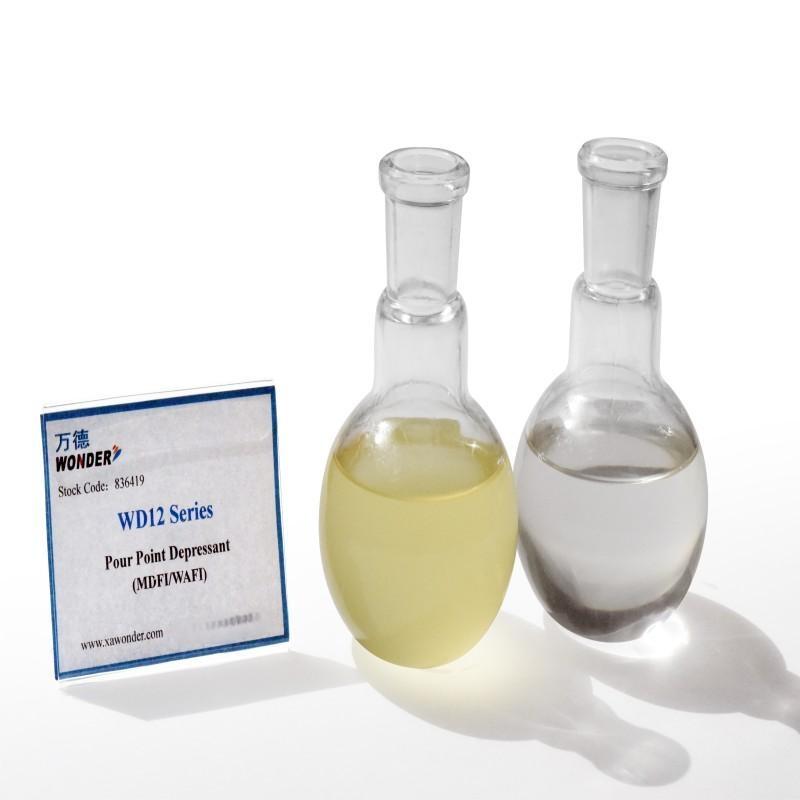-
Categories
-
Pharmaceutical Intermediates
-
Active Pharmaceutical Ingredients
-
Food Additives
- Industrial Coatings
- Agrochemicals
- Dyes and Pigments
- Surfactant
- Flavors and Fragrances
- Chemical Reagents
- Catalyst and Auxiliary
- Natural Products
- Inorganic Chemistry
-
Organic Chemistry
-
Biochemical Engineering
- Analytical Chemistry
-
Cosmetic Ingredient
- Water Treatment Chemical
-
Pharmaceutical Intermediates
Promotion
ECHEMI Mall
Wholesale
Weekly Price
Exhibition
News
-
Trade Service
Since the beginning of June, the economic recession expectations and the terminal demand peak season are not superimposed, the geopolitical conflict has affected the cooling and the growth of crude oil demand has been less than expected, and the price of crude oil has continued to decline, and it has returned to the position before the Russian-Ukrainian conflict
.
The market is changing, the long-term can not be separated from the fundamentals, the short-term subject to the emotional side, grasp the main contradictions and the main aspects of the contradiction, or can clarify the reasons, identify the current position and future direction
.
1, why the ups and downs
The lunar line is three consecutive shades
.
From the monthly lines of June, July and August, Brent and WTI both appeared in the form of three consecutive clouds, ending the six consecutive yangs of the monthly line since December 2021, with a three-month decline of more than $20; From the weekly line, both Brent and WTI have fallen to the 60-week line, the WTI60 weekly line of $89.
75 has fallen 4 times, the Brent 60-week line of $92.
91 has fallen below 1 time; from the daily line, both Brent and WTI have fallen below the 60-day line on July 5 and continue to run
below the 60-day line.
The current bearish posture is clear, with important short-term support levels around
the 60-week line.
Strong back flattening
.
Since the Russian-Ukrainian conflict, the spread between Brent and WTI has been a strong Backwardation structure, that is, the price in the near month is significantly higher than the price in the far month, indicating the tight supply and the strong
price.
In August, the spread structure gradually weakened
.
The spreads between Brent and WTI's first and second lines have fallen to less than $1, close to flattening, indicating that strong prices are gradually weakening or even disappearing, and need to be closely tracked
.
In the later stages, if the Contango structure appears, pay extra attention to the risks
.
The demand side is weakening
.
High energy prices have accelerated higher inflation, and the Federal Reserve has responded with successive sharp interest rate hikes, triggering recession fears, with developing countries bearing the brunt of the recent turmoil in Sri Lanka
.
Energy bill growth and economic expectations have declined, and the characteristics of the peak demand season in Europe and the United States have become a reality
.
The overall cracking spread of refined oil products in the United States continued to weaken, the refinery operating rate was weaker than expected by the season, and gradually formed a negative feedback on crude oil demand, market participants have hedged, and market trading liquidity is also weakening
.
Due to the impact of the epidemic and the decline in exports, the processing volume of crude oil in the Chinese market weakened
year-on-year.
From January to July, crude oil processing volume decreased by 6.
3%
year-on-year.
2.
Where did the Russian oil go?
The sanctions are thunderous and the rain is small
.
Europe has introduced several rounds of sanctions in succession on the one hand, and on the other hand, it has given sanctions a buffer period (crude oil will enter into force at the end of the year); On the one hand, the maximum price limit of Russian oil is jointly launched, and on the other hand, it is worried about the impact
of a total ban on Russian oil on the energy market.
Since the outbreak of the Russian-Ukrainian conflict, the biggest concern of the market has not become a reality, and Russia's crude oil production has only decreased by about 500,000 barrels per day compared with the actual pre-conflict period
.
Concerns about Russia's crude oil export channels, with the market groping and logistics shifting, the actual impact is limited to the level
of hundreds of thousands of barrels / day.
The Russian ruble performed exceptionally eye-catchingly
.
Against the backdrop of the appreciation of the US dollar and the depreciation of other currencies, the Russian ruble has continued to appreciate since March
.
Currently, the USD/RUB is oscillating around 60, a significant improvement
over the pre-war 80 level.
New flow directions are gradually taking shape
.
Russian crude oil pipeline exports to Europe remained largely unchanged, with the main change being maritime exports
.
Most of the reduced sea freight in Europe has been successfully transferred to regions
such as Asia.
In India, for example, before the Russian-Ukrainian conflict, Russian oil exports to India were only about 100,000 barrels per day, and now they have soared to 1 million barrels per day, an increase of 9 times
.
Overall, exports of Russian crude oil and refined products to Western countries such as Europe and the United States decreased by about 1.
5 million bpd, while exports to Asian countries increased by about 1 million bpd, with export transshipments from unknown destinations (such as transshipments on the high seas) actually decreased by a factor of less
.
Transportation costs are rising
rapidly.
While Russian crude oil shifts from Europe to farther regions such as Asia, Europe needs to replenish new supply channels from the Americas, Africa, and the Middle East, so that the original principle of nearby trade no longer exists, and the cost of shipping and time has increased
significantly.
Since the Russian-Ukrainian conflict, the transshipment of crude oil has led to an increase
in freight rates for various ship types.
VLCC rents have exceeded $40,000 per day, and freight rates are close to $2 per barrel; The daily rental of the Suez ship type is nearly 50,000 US dollars, and the daily rent of the Aphra ship type is nearly 60,000 US dollars, both of which are the highest in
the past two years.
Global ocean shipments of crude oil recently reached 48 million barrels per day, a record high in the same period of previous years
.
The Russian-Ukrainian conflict has led to changes in the pattern of crude oil trade and rising transportation costs, or it may have become the norm
.
3.
Pay more attention to market sentiment
The impact of the Russian-Ukrainian conflict cooled
down.
The Russian-Ukrainian conflict has evolved from an expected blitzkrieg to a protracted war, with fronts stretching for thousands of kilometers, the progress of the war uncertain, war reports intermittent, gradually fading from news headlines, and the public eye no longer focused
.
From the perspective of market psychology and sentiment, the impact of the Russian-Ukrainian conflict on the market has gradually decreased, and even Russia's natural gas cut-off in a few countries has rarely caused the market to react
.
The market is mainly concerned about the economic recession and the expectation of weaker demand, and the Russian-Ukrainian conflict has been in a relatively secondary position
.
Iran's nuclear negotiations are back
.
The European Union has actively mediated and submitted the text of a new Iranian nuclear agreement in early August, which includes matters
of high market concern such as easing sanctions and resuming Iranian crude oil exports.
The market's expectations for the actual conclusion of the Iranian nuclear agreement are rising, and whether it can be reached requires the United States and Iran to compromise with each other, which needs to be confirmed
.
If sanctions on Iranian crude oil are lifted, Iran could increase production to 4 million bpd by 2023, 1.
5 million bpd
higher than it is now.
Then, the psychological impact and realistic impact on the market will soon appear in terms of prices, and the market will continue to be under pressure
.
4.
Do you want to continue to explore the bottom?
On the whole, the fundamentals of crude oil supply and demand remain balanced, and the future period will be more affected by emotions: interest rate hikes trigger recession and Iranian nuclear negotiations lead to supply increases
.
Under the influence of market sentiment, the market continues to be weak
.
But as the summer passes, autumn and winter come, and the market is baptized, the impact of Russian crude oil and natural gas on Europe in winter will regain its important position
.
Taking Brent crude oil as an example, it may dip below 80 to 85 US dollars / barrel, but it may still rise above 100 US dollars / barrel around winter
.







